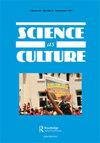用大师的工具重塑水的未来?
IF 2.4
3区 哲学
Q1 CULTURAL STUDIES
引用次数: 0
摘要
当Lorde(2003)提出主人的房子不能用主人的工具拆除时,这促使Le Guin(2004)提出了一系列问题:是否可以发明替代工具来建造我们的未来?什么是不该学的?难道民主和科学也必须被抛弃吗?勒奎恩称这个比喻“丰富而危险”,她自己也无法回答它提出的问题。争论的焦点是知识的彻底重塑对于物质现实的成功转型有多必要。在Andrea Ballestero的《水的未来历史》一书中也提出了类似的问题,书中问道,在资本主义逻辑中形成的抽象工具能否成功地用于对抗水的商品化。书的开头描述了在墨西哥城举行的世界水论坛上,抗议者摇晃着装满硬币的水瓶,谴责水的商品化,并要求将其视为一项人权。Ballestero着眼于哥斯达黎加和巴西的水专家、政府官员和活动家的日常工作,以及他们使用的工具来对抗水的各种概念——无论是作为商品还是作为人权。这个探索并没有把她带到像河流、水坝或湖泊这样的有水的地方,而是出乎意料地移除了办公室、会议室、车间和电脑电子表格等官僚空间。Ballestero关注四种技术设备作为生产的民族志对象,每一种都以不同的方式物质化水。对于巴列斯特罗来说,这些设备值得带着博物馆展览中保留的那种奇迹来凝视。她的方法借鉴了16世纪欧洲出现的古老的奇珍异宝(Wunderkammer),并将从遥远的帝国收集的各种奇珍异宝并放在一起,形成了新的组合,改变了它们的意义。巴列斯特罗的公式、索引、清单和契约这四种工具被框定为她书中展示的橱柜珍品。通过研究用于计算水价的公式、用于确保水的可负担性的消费者价格指数、用于削弱水的公共所有权的分类清单以及用于鼓励公众关心水的公民契约,Ballestero展示了这些设备如何以多种方式(重新)物质化水,并使水成为商品或人权。一些学者指出,商品和人权之间缺乏区分令人不安。法律学者D ' souza(2018)声称:“现代权利概念的诞生要归功于土地被转化为商品的那一刻,成千上万的人被赶出他们称之为‘家园’的地方(第5页)。”Ballestero在她的文章中同样强调了马克思(1976)的观察,即“伊甸园……先天权利”存在于“流通或商品交换领域”(第280页)。本文章由计算机程序翻译,如有差异,请以英文原文为准。
Re-righting Water’s Future with the Master’s Tools?
When Lorde (2003) suggested the master’s house could not be dismantled with the master’s tools, it prompted Le Guin (2004) to ask a series of questions: Are alternative tools to be invented to build our future? What should be unlearned? Must democracy and science also be discarded? Le Guin called the metaphor ‘rich and dangerous’ and was herself unable to answer the questions it raised. At issue was how necessary the radical refashioning of knowledge was for a successful transformation of material reality. Similar questions are also at stake in A Future History of Water by Andrea Ballestero, which asks whether abstract instruments forged within the logics of capitalism can be successfully deployed against water’s commodification. The book opens with an account of protestors at the World Water Forum in Mexico City shaking water bottles full of coins to denounce water’s commodification and demand it as a human right. Ballestero looks at the everyday labor of water experts, public officials, and activists in Costa Rica and Brazil, as well as the tools they marshal to contest competing conceptualizations of water – as either a commodity or a human right. This quest takes her not so much to watery sites themselves – like rivers, dams, or lakes – but unexpectedly to removed bureaucratic spaces like offices, meeting rooms, workshops, and computer spreadsheets. Ballestero attends to four technolegal devices as productive ethnographic objects, each materializing water in different ways. For Ballestero, these devices deserve to be gazed at with the same sort of wonder reserved for museum displays. Her approach draws on the old cabinet of wonder (Wunderkammer), which emerged in sixteenth century Europe and juxtaposed various curiosities collected from the far reaches of empire into new assemblages that transformed their meanings. Ballestero’s four devices of formula, index, list, and pact are framed as cabinet curiosities displayed in the pages of her book. By examining a formula used to calculate the price of water, the consumer price index used to secure water’s affordability, a taxonomic list used to undermine the public ownership of water, and citizen pacts used to encourage public care for water, Ballestero shows how these devices (re)materialize water in multiple ways and render water as commodity or human right. Some scholarship has noted the troubling lack of distinction between commodities and human rights. The legal scholar D’Souza (2018) claims: ‘The modern concept of rights owes its birth to that moment when land was transformed into a commodity and hundreds of thousands of people were evicted from the place they called their ‘homeland’’ (p. 5). Ballestero similarly highlights in her text Marx’s (1976) observation that ‘the very Eden of... innate rights’ is found within ‘[t]he sphere of circulation or commodity exchange’ (p. 280).
求助全文
通过发布文献求助,成功后即可免费获取论文全文。
去求助
来源期刊

Science As Culture
Multiple-
CiteScore
5.20
自引率
3.80%
发文量
28
期刊介绍:
Our culture is a scientific one, defining what is natural and what is rational. Its values can be seen in what are sought out as facts and made as artefacts, what are designed as processes and products, and what are forged as weapons and filmed as wonders. In our daily experience, power is exercised through expertise, e.g. in science, technology and medicine. Science as Culture explores how all these shape the values which contend for influence over the wider society. Science mediates our cultural experience. It increasingly defines what it is to be a person, through genetics, medicine and information technology. Its values get embodied and naturalized in concepts, techniques, research priorities, gadgets and advertising. Many films, artworks and novels express popular concerns about these developments. In a society where icons of progress are drawn from science, technology and medicine, they are either celebrated or demonised. Often their progress is feared as ’unnatural’, while their critics are labelled ’irrational’. Public concerns are rebuffed by ostensibly value-neutral experts and positivist polemics. Yet the culture of science is open to study like any other culture. Cultural studies analyses the role of expertise throughout society. Many journals address the history, philosophy and social studies of science, its popularisation, and the public understanding of society.
 求助内容:
求助内容: 应助结果提醒方式:
应助结果提醒方式:


